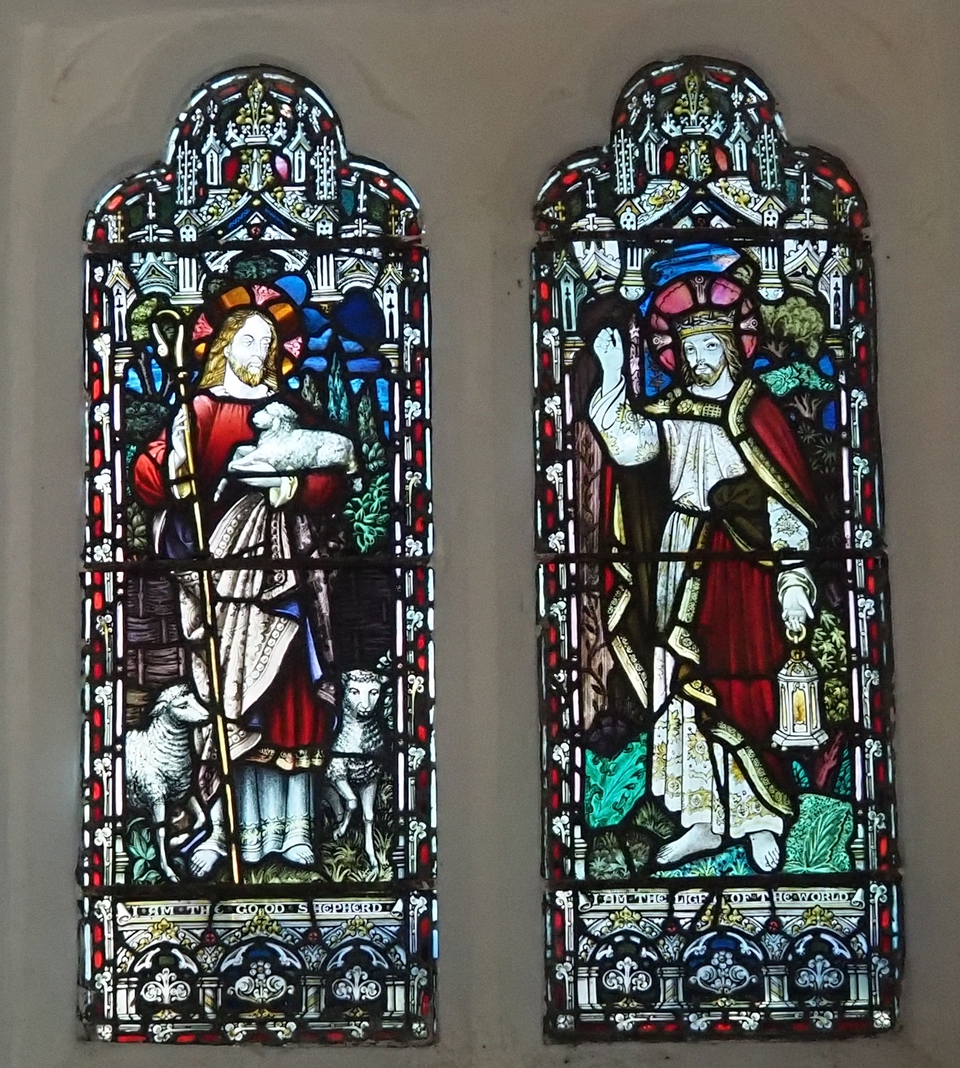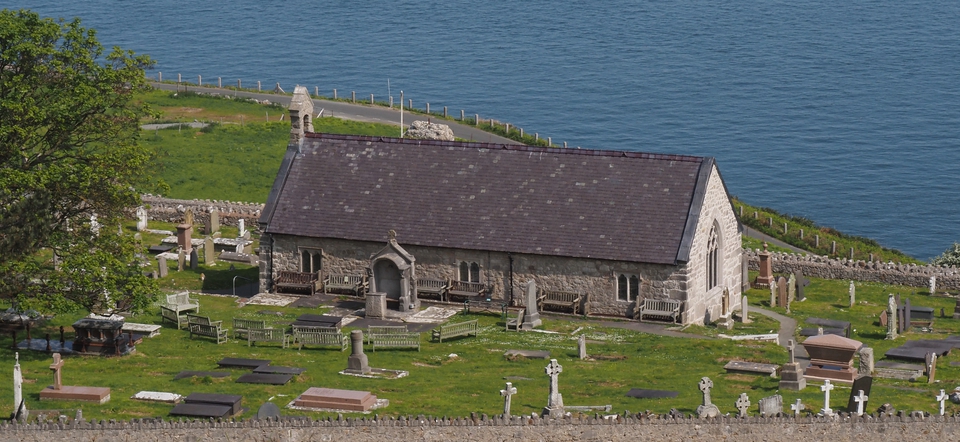
Taith o amgylch Eglwys St. Tudno
Adeiladwyd yr eglwys mewn carreg gyntaf tua'r 12fed ganrif a'i hehangu i'r maint presennol yn y 15fed ganrif. Gwnaed gwaith atgyweirio ym 1855 ac ym 1906, tra disodlwyd y llechi yn 2012 a gwnaed atgyweiriadau gwaith carreg helaeth yn 2023.
Gan fod yr eglwys braidd yn fach, mae "taith" yn fwy o daith gerdded o un pen i'r llall. Mae'r "daith" hon yn disgrifio'r hyn sydd i'w weld wrth fynd i mewn wrth y drws gorllewinol a cherdded tuag at yr allor.
Y gloch
Mae'r gloch uwchben y drws gorllewinol ac yn hongian mewn tyred cloch fechan a ychwanegwyd ym 1703. Mae'r gloch yn cael ei chanu cyn gwasanaethau i ddweud wrth bobl bod gwasanaeth ar fin dechrau. Mae arysgrifau ar y gloch yn cynnwys enw'r offeiriad y pryd hwnnw, Evan Ellis, a draig. Fodd bynnag, sillafwyd enw'r dref fel "Llandidno"!
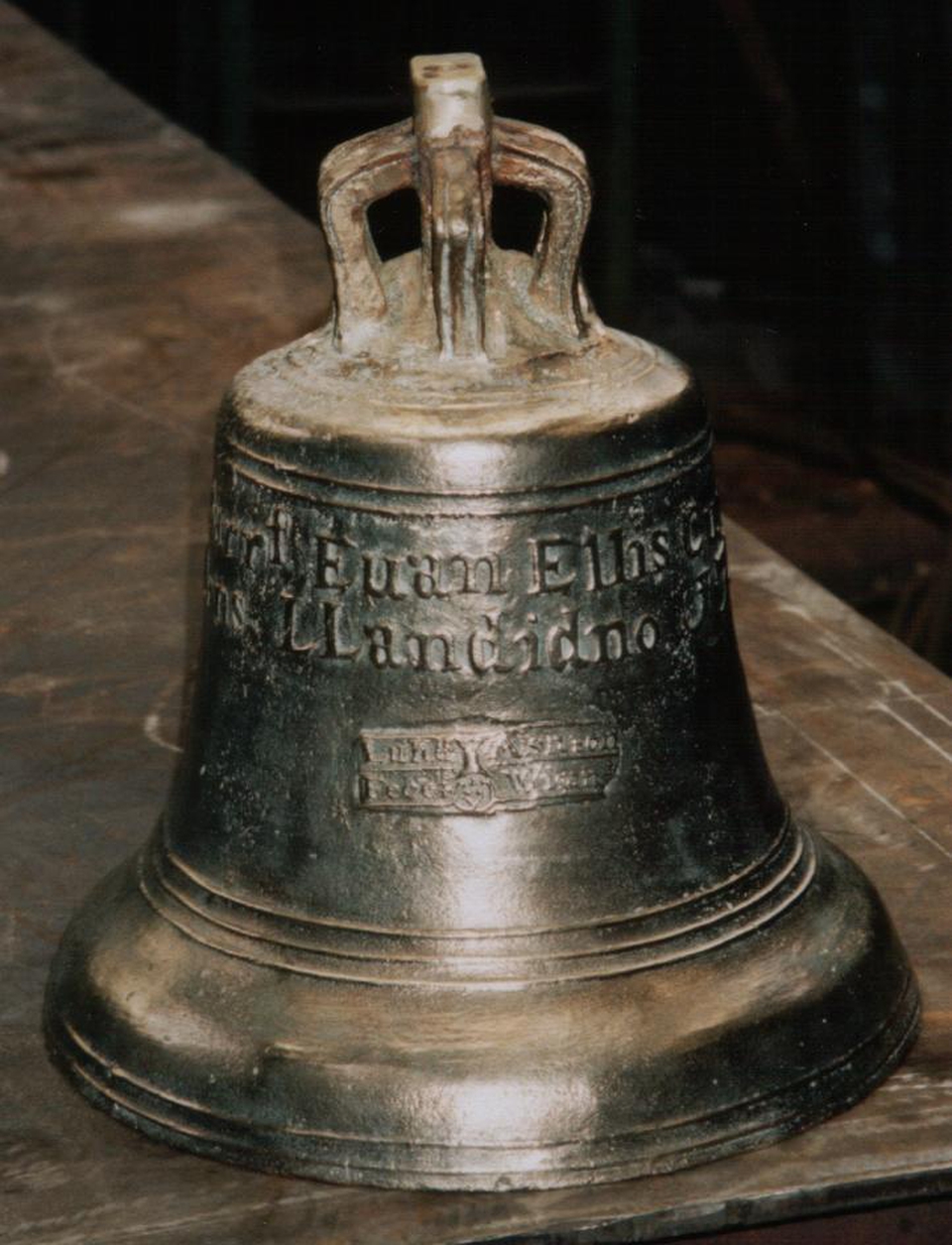
Y ffont
Mae'r ffont ar y chwith, ychydig y tu mewn i'r drws, a dyma lle mae babanod, neu blant neu oedolion, yn cael eu bedyddio. Mae'n agos at y drws fel arwydd bod bedydd yn croesawu pobl i'r eglwys. Mae powlen y bedyddfaen yn dyddio o'r 12fed neu'r 13eg ganrif ac mae ganddo arddull Celtaidd o gerfiadau o'i chwmpas. Pan oedd yr eglwys yn adfeilion cyn y gwaith adfer yn 1855, symudodd y bobl leol rai arteffactau o'r eglwys, gan gynnwys y bedyddfaen. Pan adferwyd yr eglwys daethpwyd o hyd i'r bedyddfaen ar fferm leol, lle'r oedd yn cael ei ddefnyddio fel cafn gan bwmp dŵr. Mae'n dal i gael ei ddefnyddio ar gyfer bedyddiadau heddiw.
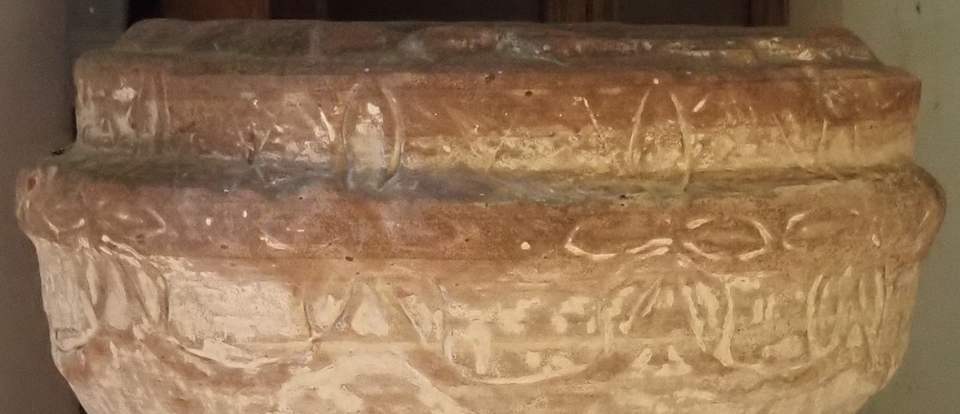
Gorchuddion beddau carreg
Mae'r rhain wedi'u gosod ar y wal ar y dde ac yn dyddio o tua'r 14eg ganrif. Cafwyd hyd iddynt wedi eu claddu yn y fynwent ar yr adeg yr adnewyddwyd yr eglwys a dygwyd hwy i mewn yma i'w hamddiffyn rhag y tywydd. Nid ydym yn gwybod beddi o bwy y daethant ond tybiwn ei bod yn rhaid eu bod yn bobl bwysig. Fel y bedyddfaen, mae gan y cerrig batrymau Celtaidd wedi'u cerfio arnynt.
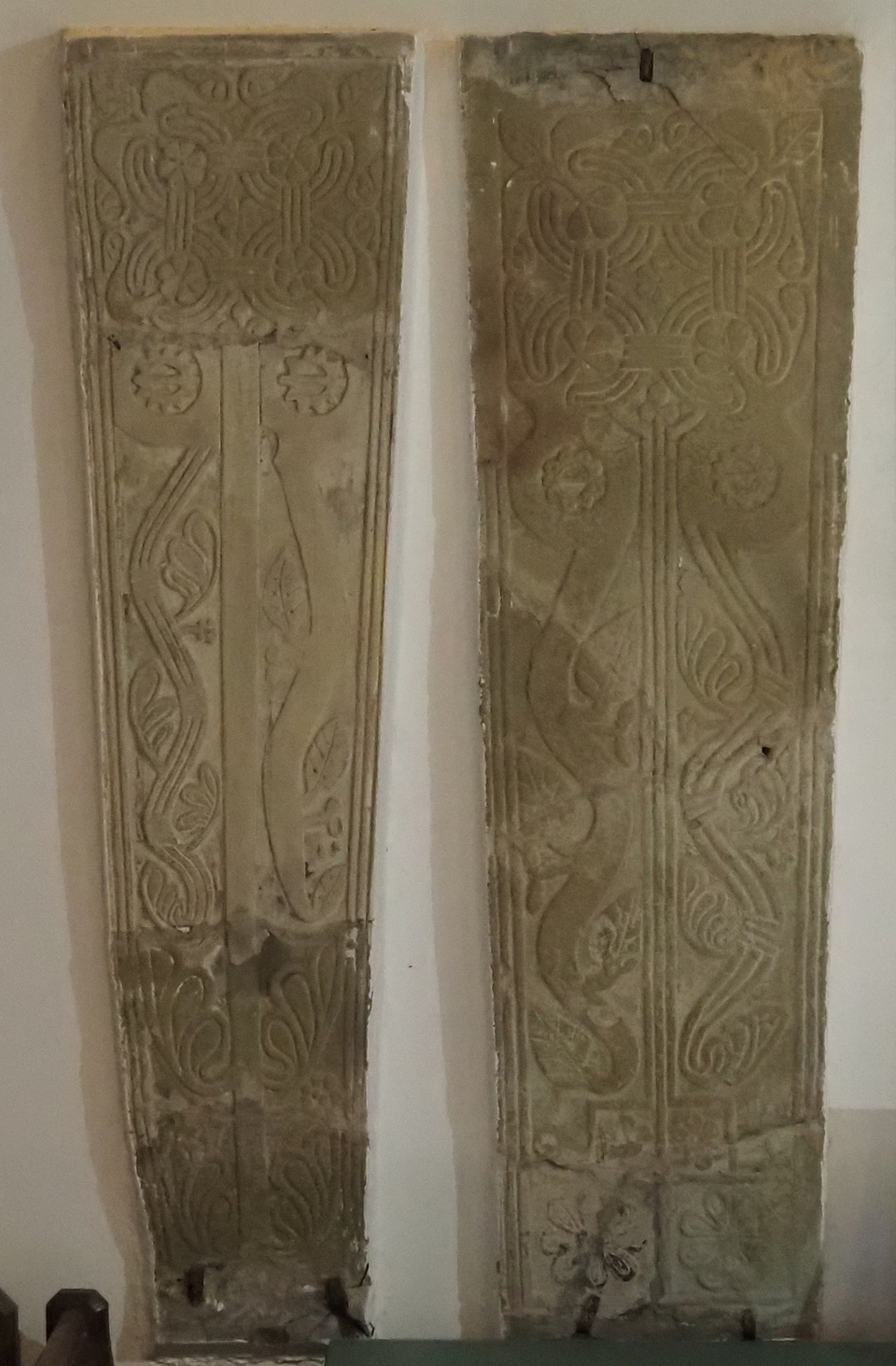
Ffenestr pen crwn
Dyma'r ffenestr gyntaf ar yr ochr chwith, y gogledd. Ystyrir bod rhan o wal ogleddol yr eglwys yn dyddio o'r 12fed ganrif a'i bod yn cynnwys y ffenestr ben gron ger y porth. Ar yr adeg pan adeiladwyd yr eglwys roedd yn anarferol iawn cael ffenestr yn wal ogleddol eglwys. Fodd bynnag, mae chwedl bod cannwyll yn arfer cael ei gosod yn y ffenestr hon yn y nos, i fod yn dirnod i forwyr yn y nos. Heb unrhyw oleuadau eraill o gwmpas, mae'n debyg y gellid gweld cannwyll o'r môr. Mae'r gwydr lliw yn oes Fictoria.
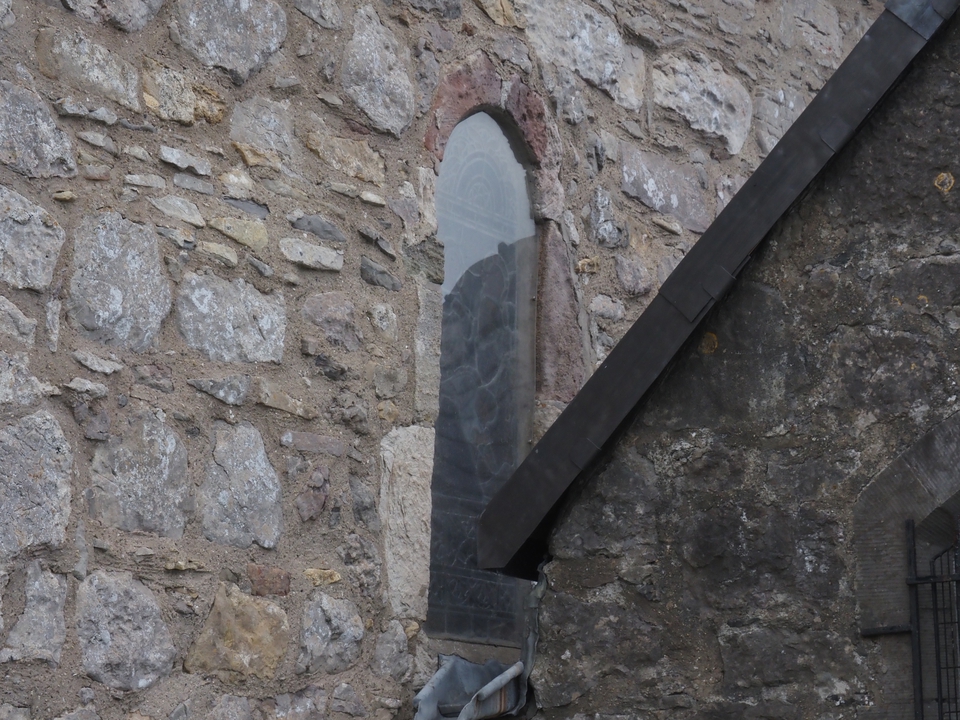
Plac adfer a chofeb i Mr. William Henry Reece
Mae'r arysgrif yn y bwa yn y wal chwith yn cofnodi adferiad yr eglwys yn 1855 ac mae wedi'i ysgrifennu mewn tair iaith: Cymraeg, Saesneg a Lladin. Mae'r plac gerllaw gyda chroes yn gofeb i Mr. William Henry Reece, a adferodd Eglwys St. Tudno yn 1855 ond sydd wedi'i gladdu yn Birmingham, lle bu'n byw pan fu farw.
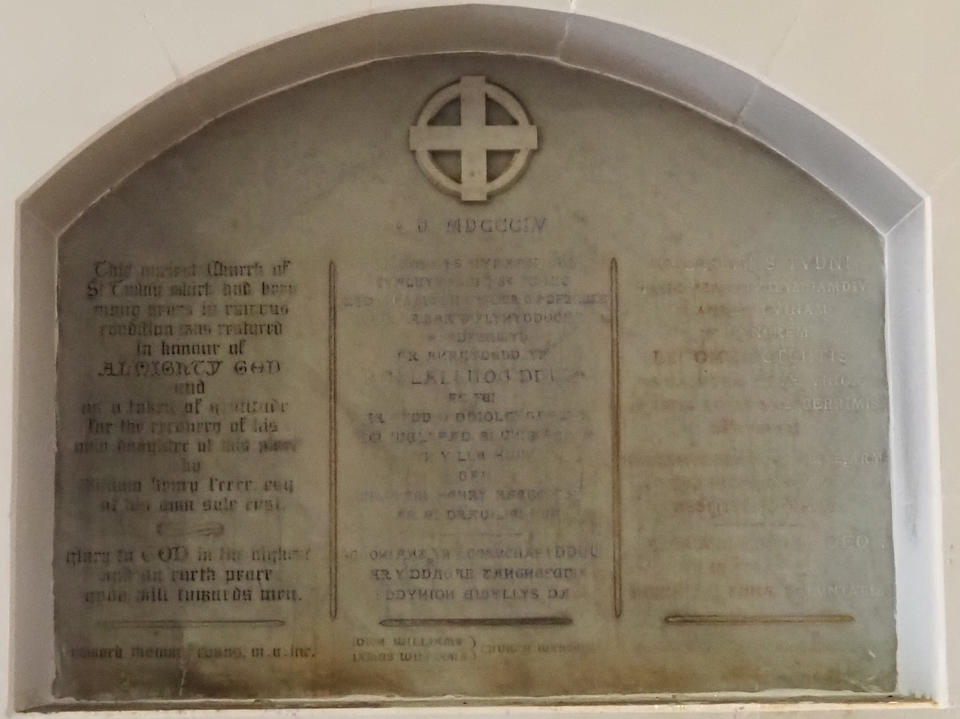
Cerfiadau pren yn y gangell a'r cysegr
Mae'r rhain i fyny'r camau.
Uwchben yr allor mae cerfiad o'r Stigmata. Mae hyn yn cynrychioli’r pum clwyf a gafodd Iesu pan gafodd ei groeshoelio: un ym mhob llaw, un ym mhob troed ac un yn ei ystlys. Mae'n debyg bod y cerfiadau mewn pren i gyd o'r 15fed ganrif a bryd hynny mae'n debygol y byddent i gyd wedi'u lliwio'n llachar fel y stigma.
Mae mwy o gerfiadau yn y pren o dan y to. Ar hyd pob panel mae cerfiadau o winwydd, grawnwin ac anifeiliaid. Ar y wal ddeheuol mae pelican ac ar y wal ogleddol mae aderyn a draig â dau ben.
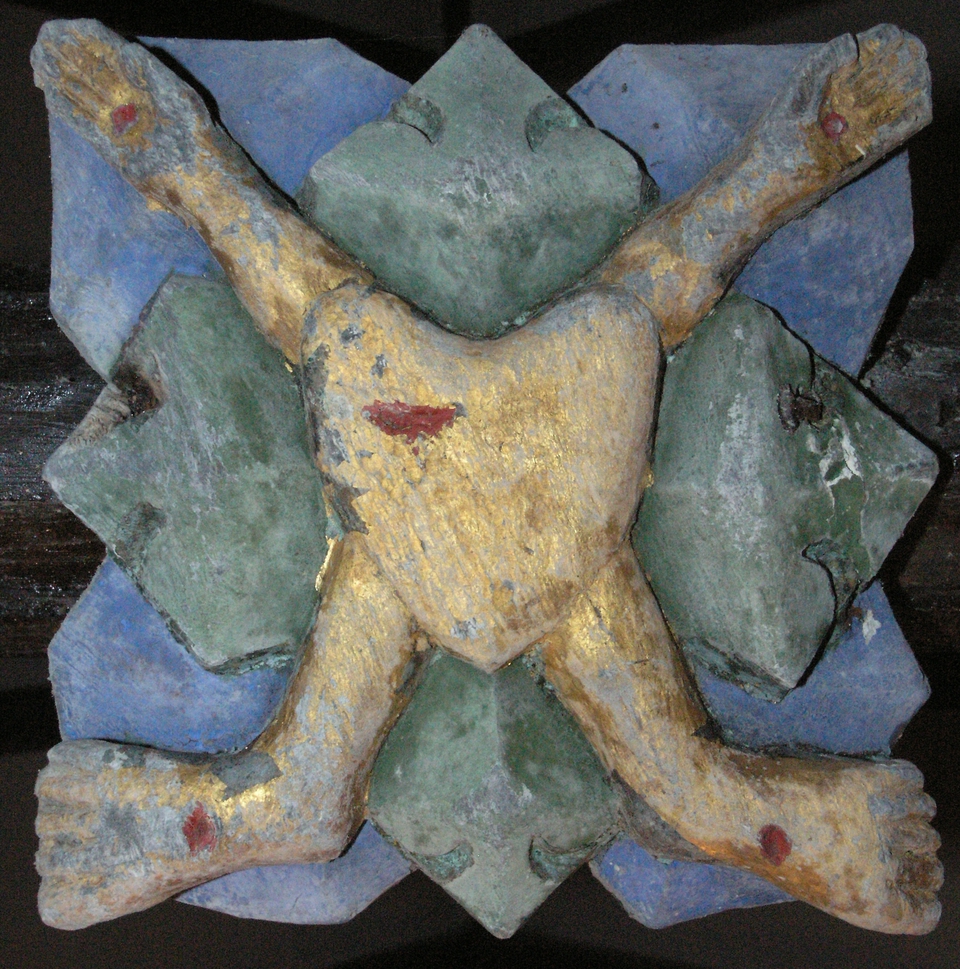
Tabledi wedi'u paentio
Mae’r tabledi peintiedig o boptu’r allor yn dangos Gweddi’r Arglwydd, Credo a Deg Gorchymyn yn Gymraeg. Ychwanegwyd y rhain yn ystod adferiad 1855.
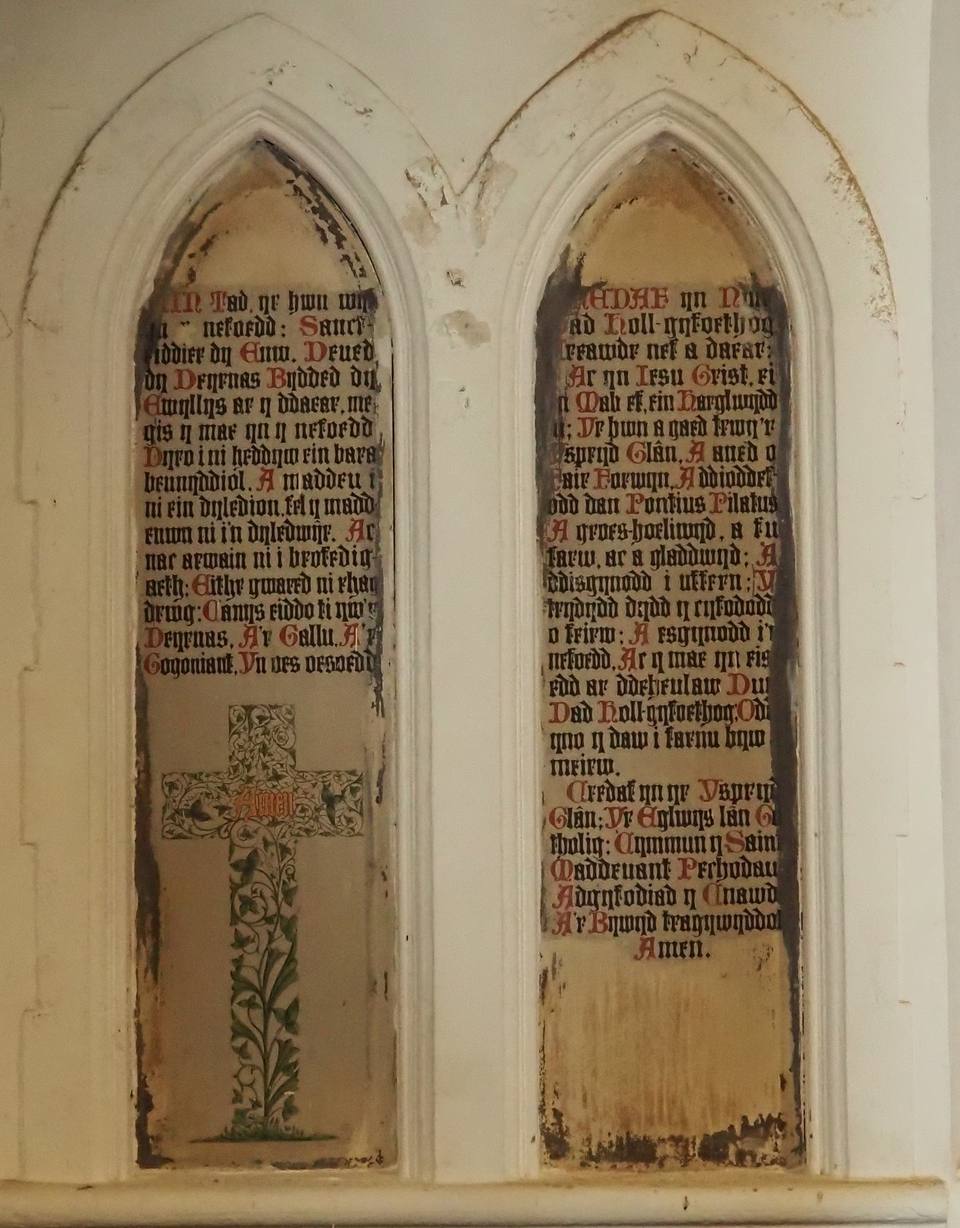
Ffenestri gwydr lliw
Mae’r ffenestri gwydr lliw yn rhai Fictoraidd a dechrau’r 20fed ganrif ac fe’u hawgrymir i gynnwys rhai enghreifftiau gwych o waith y gwneuthurwyr.
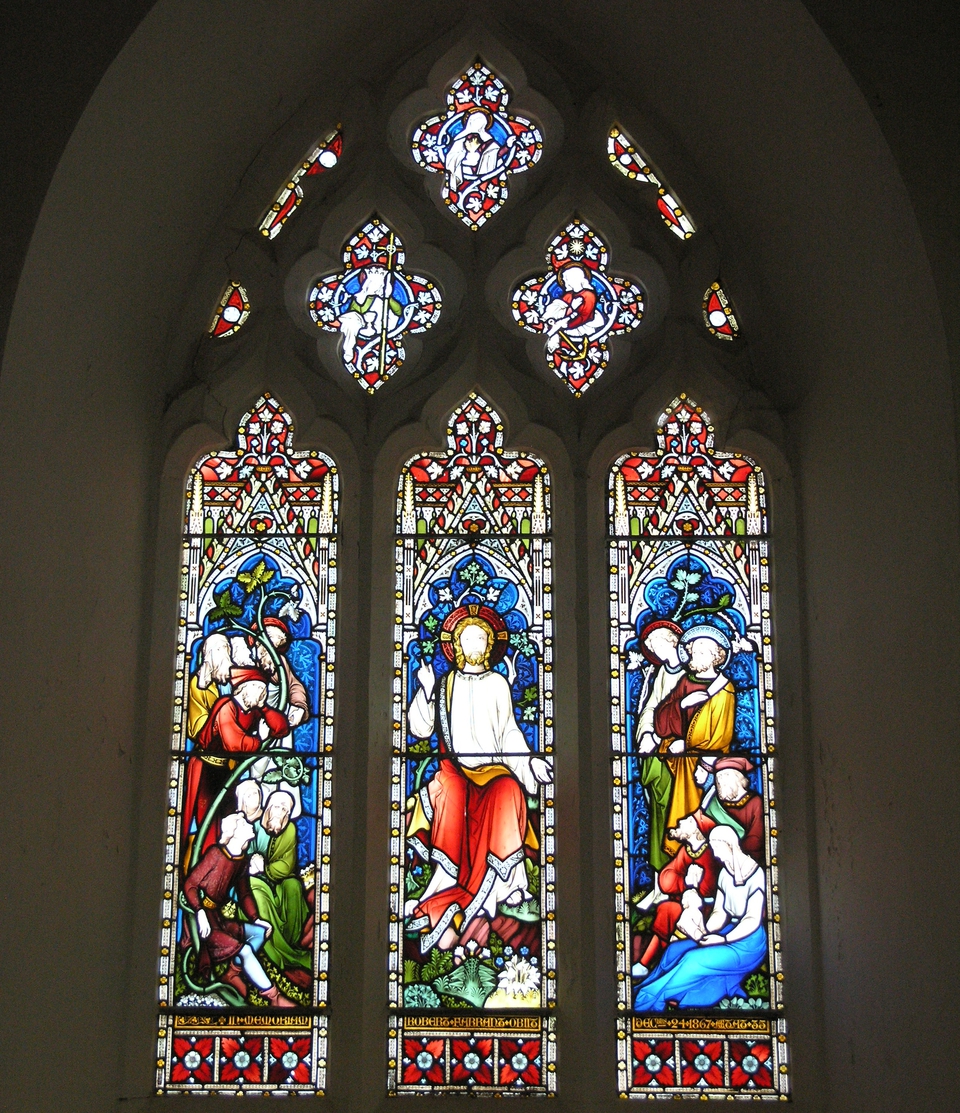
A tour of St. Tudno's Church
The church was first built in stone in about the 12th century and enlarged to the present size in the 15th century. Restorations were carried out in 1855 and in 1906, while the slates were replaced in 2012 and extensive stonework repairs were performed in 2023.
As the church is rather small, a "tour" is more of a walk from one end to the other. This "tour" describes what can be seen when entering by the west door and walking towards the altar.
The bell
The bell is above the west door and hangs in a small bell turret which was added in 1703. The bell is rung before services to tell people that a service is about to begin. Inscriptions on the bell include the name of the priest at that time, Evan Ellis, and a dragon. However, the name of the town was spelt as "Llandidno"!
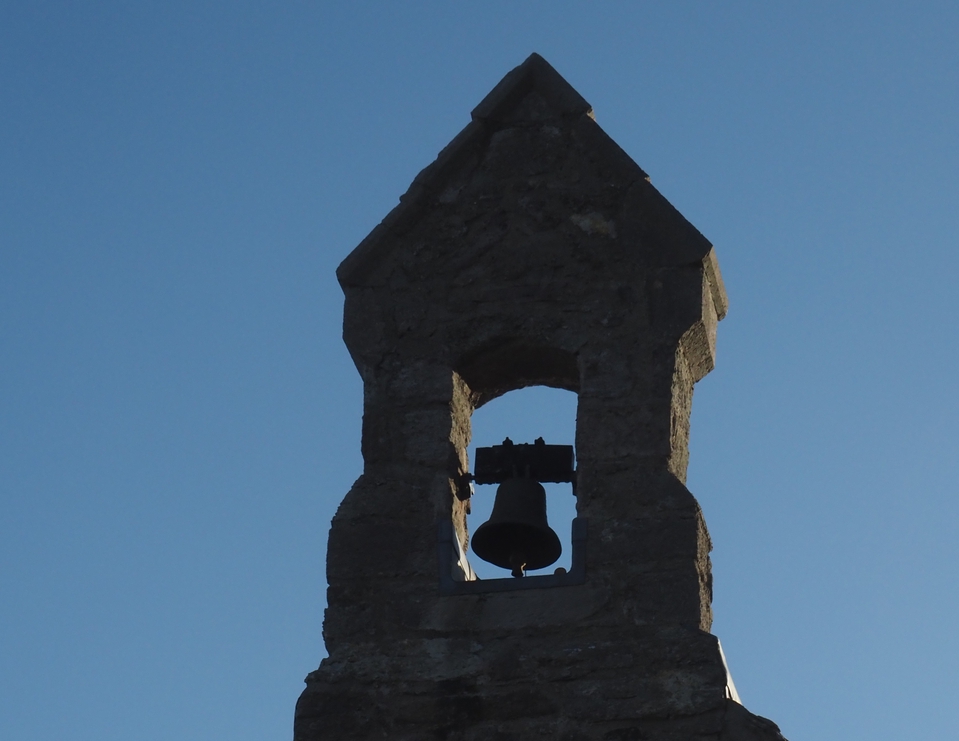
The font
The font is on the left, just inside the door, and is where babies, or children or adults, are baptised (or Christened). It is near the door as a sign that baptism welcomes people into the church. The bowl of the font dates from the 12th or 13th century and has Celtic style of carvings around it. When the church was in ruins before the restoration in 1855, the local people removed some artefacts from the church, including the font. When the church was restored the font was found at a local farm, where it was being used as a trough by a water pump. It is still used for baptisms today.
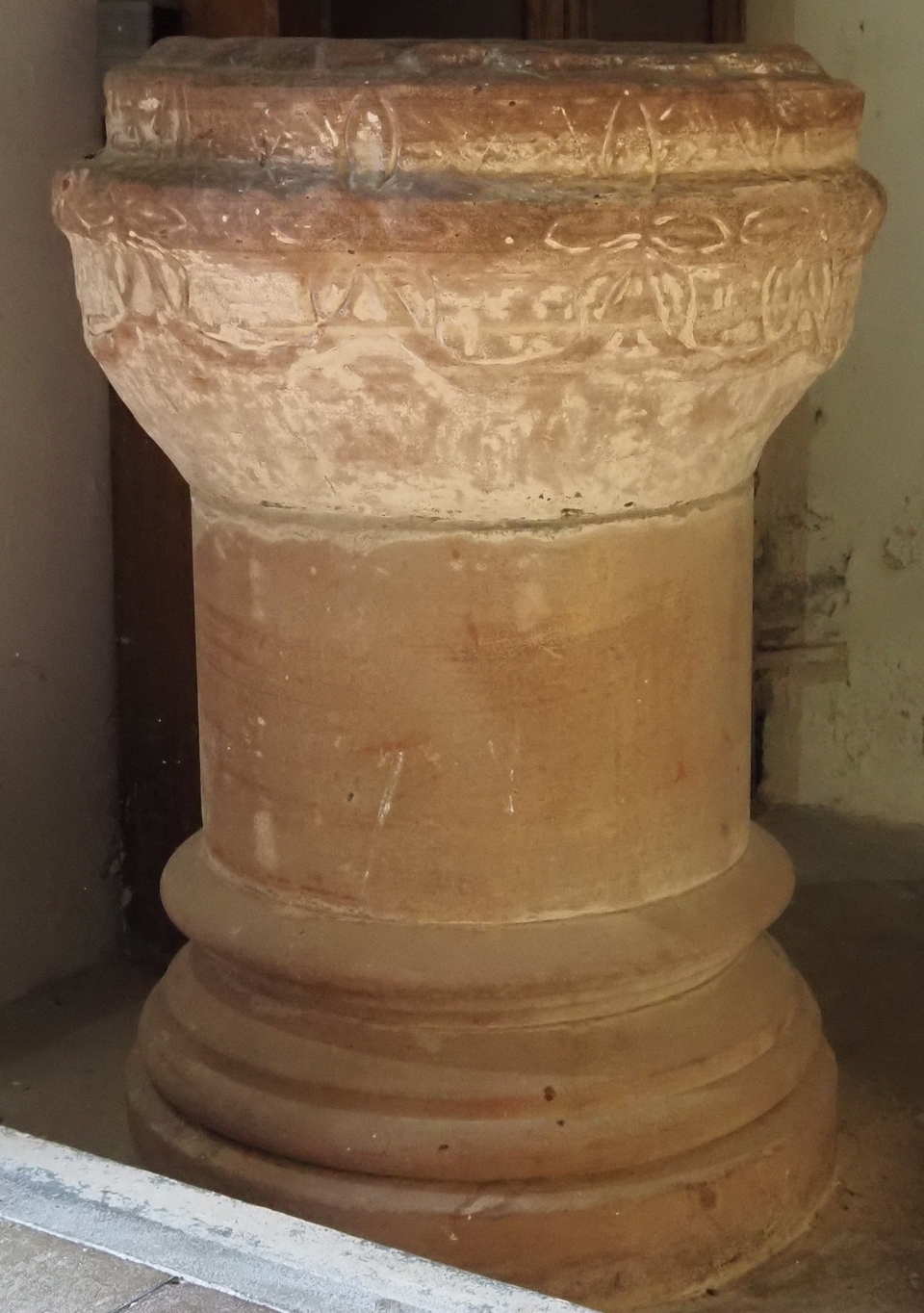
Stone grave covers
These are fixed to the wall on the right and date from about the 14th century. They were found buried in the churchyard at the time when the church was restored and were brought in here to protect them from the weather. We do not know whose graves they were from but assume that they must have been important people. Like the font, the stones have Celtic patterns carved on them.
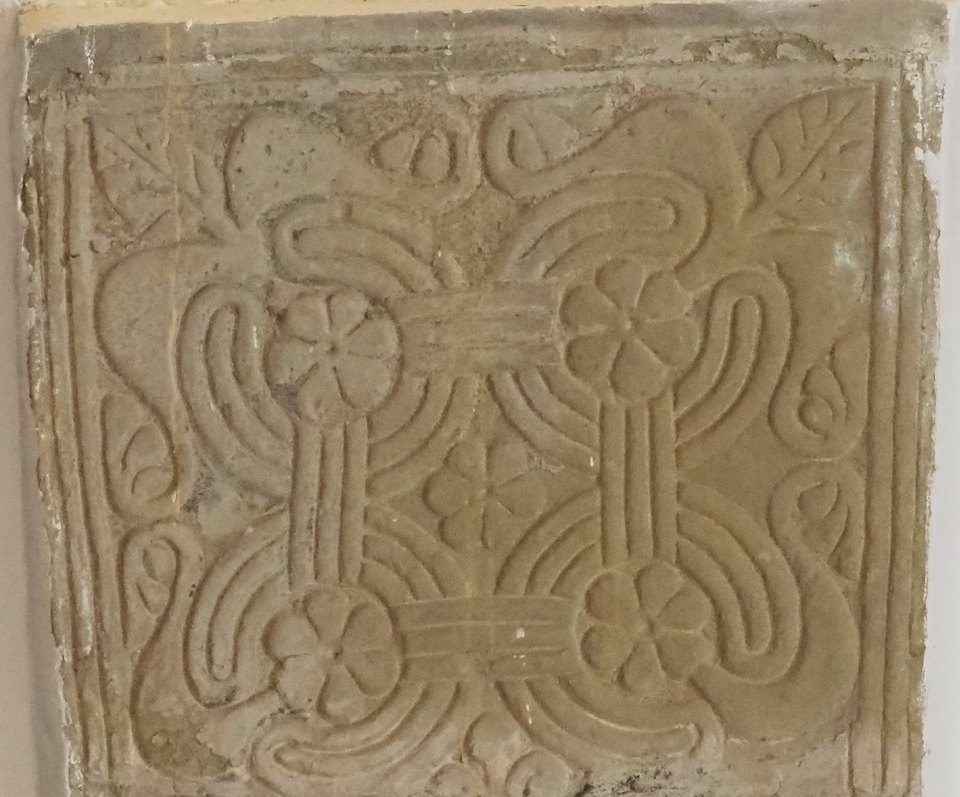
Round headed window
This is the first window on the left hand side, the north. Part of the north wall of the church is considered to date from the 12th century and to have included the round headed window near the porch. At the time when the church was built it was very unusual to have a window in the north wall of a church. However, there is a legend that a candle used to be placed in this window at night, to act as a landmark to sailors at night. With no other lights about, even a candle could probably be seen from the sea. The stained glass is Victorian.
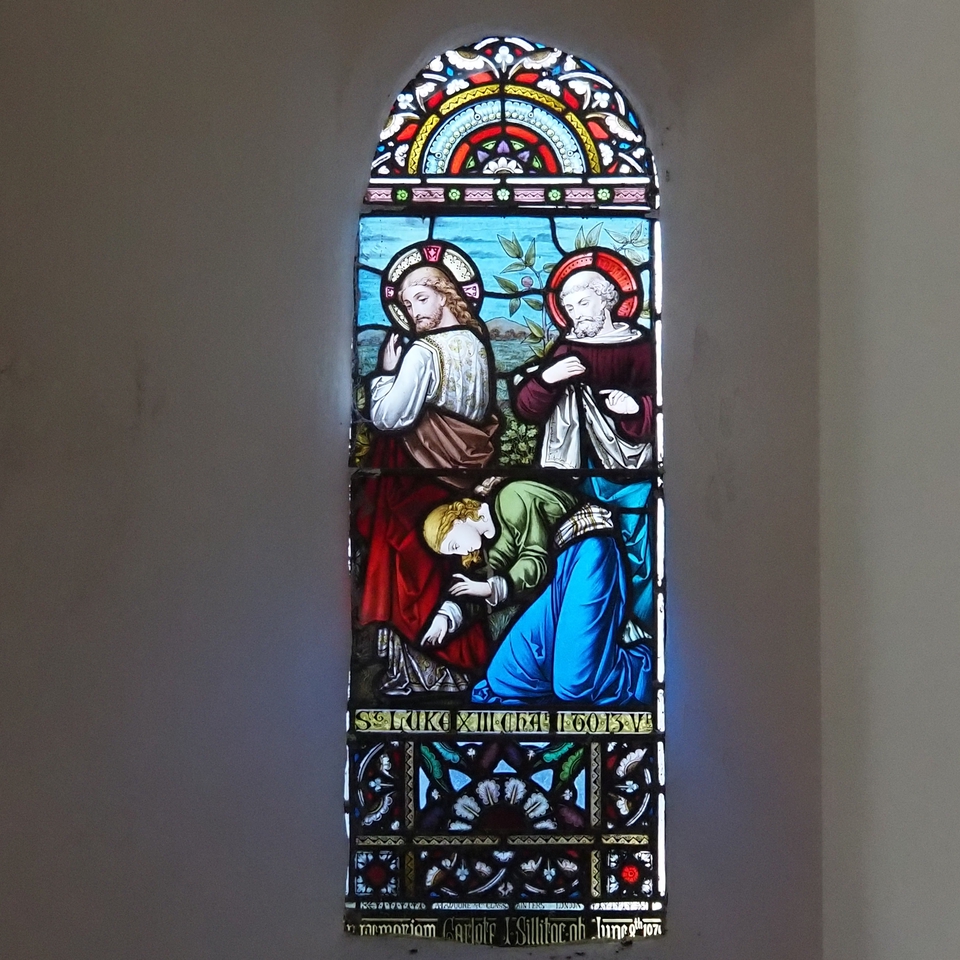
Restoration plaque and memorial to Mr. William Henry Reece
The inscription in the arch in the left hand wall records the restoration of the church in 1855 and it is written in three languages: Welsh, English and Latin. The nearby plaque with a cross is a memorial to Mr. William Henry Reece, who restored St. Tudno’s Church in 1855 but who is buried in Birmingham, where he lived when he died.
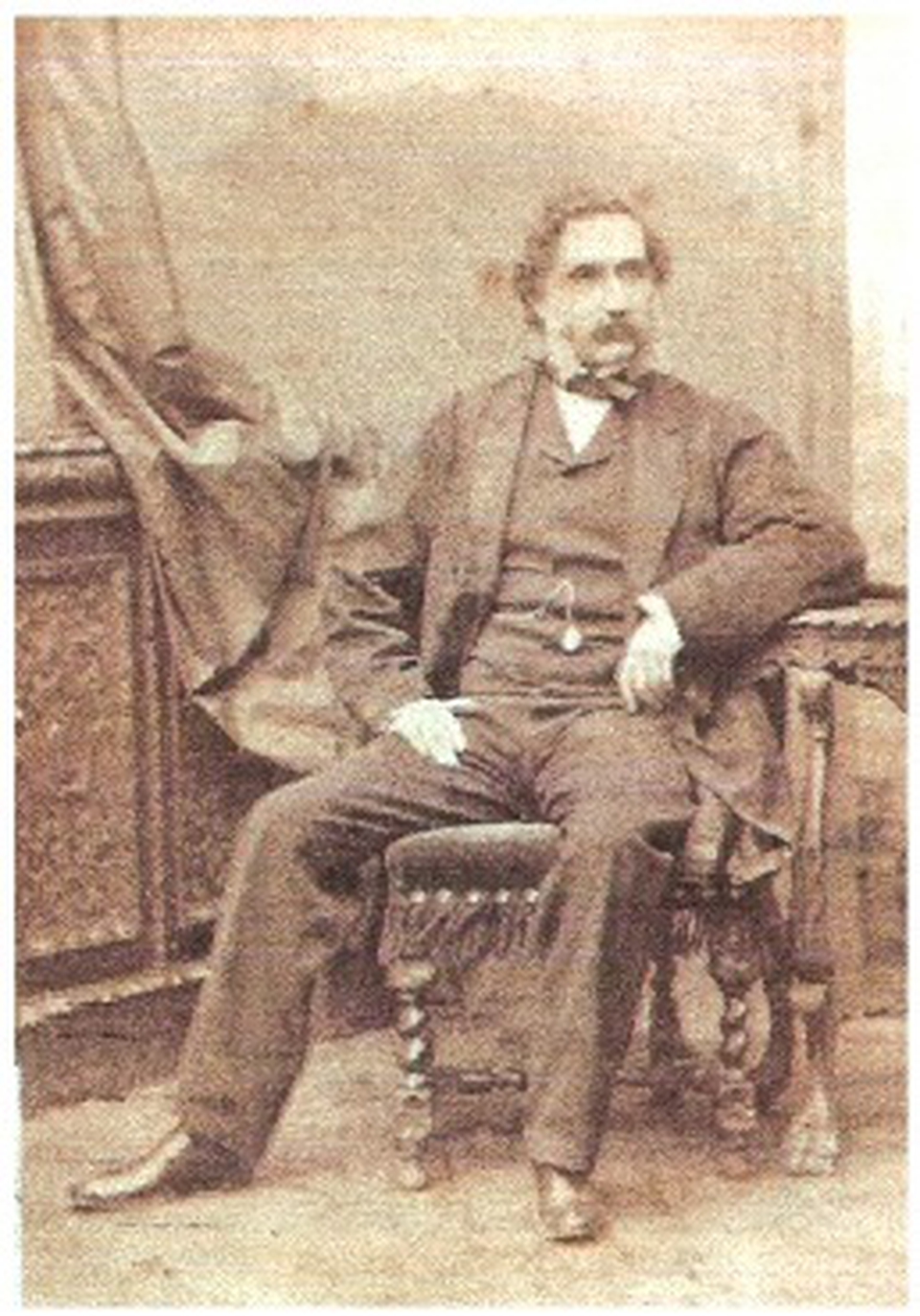
Wooden carvings in the chancel and sanctuary
These are up the steps.
Above the altar is a carving of the Stigmata. This represents the five wounds which Jesus received when he was crucified: one in each hand, one in each foot and one in his side. The carvings in wood are probably all from the 15th century and at that time it is likely that they would all have been brightly coloured like the stigma.
There are more carvings in the wood below the roof. Along each panel there are carvings of vines, grapes and animals. On the south wall is a pelican and on the north wall are a bird and a dragon with two heads.
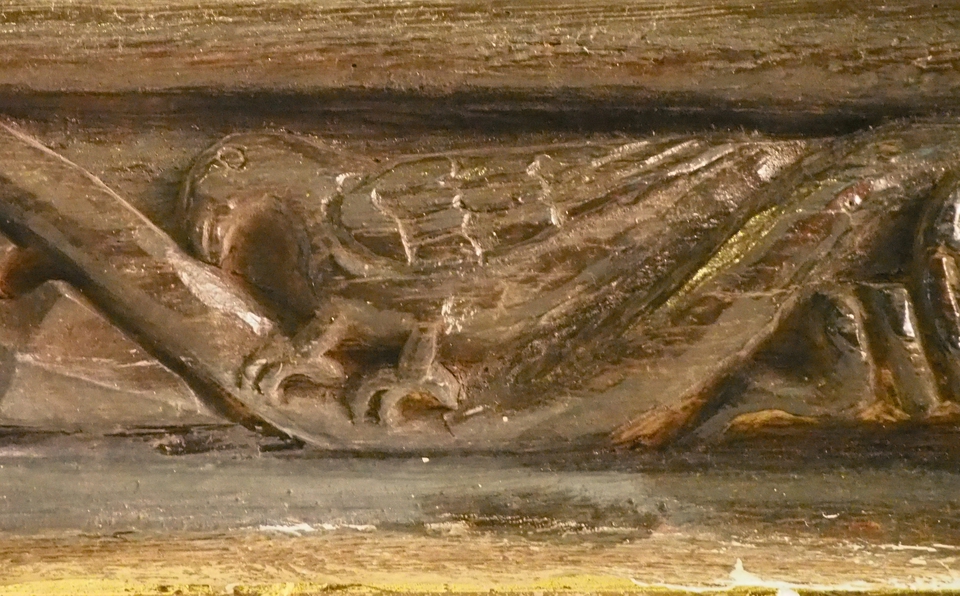
Painted tablets
The painted tablets either side of the altar show the Lord’s Prayer, Creed and Ten Commandments in Welsh. These were added during the 1855 restoration.
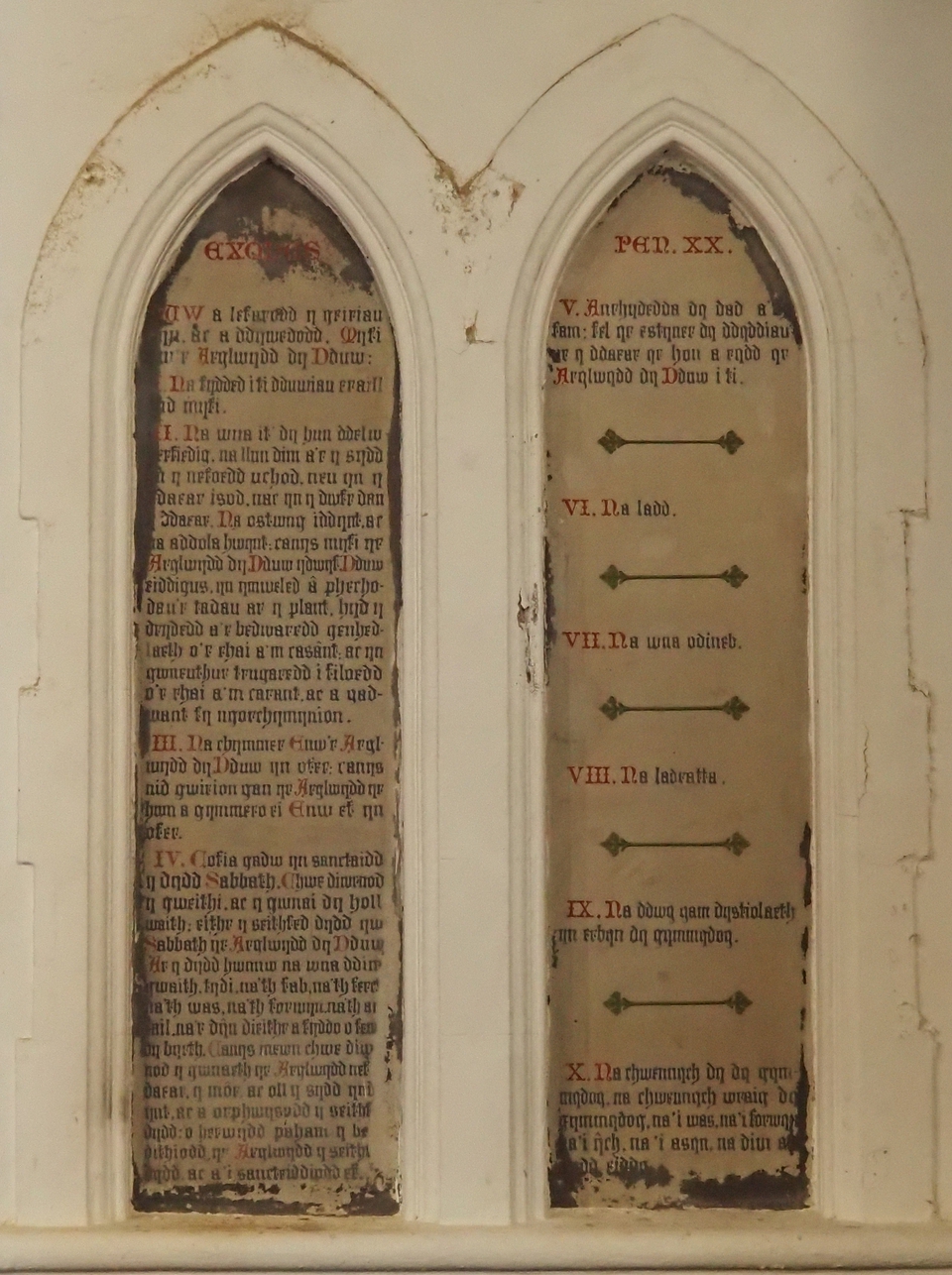
Stained glass windows
The stained glass windows are Victorian and early 20th century and are suggested to include some fine examples of the manufacturers’ work.
